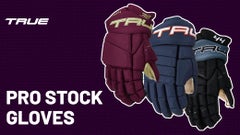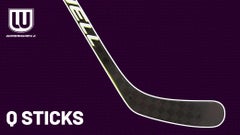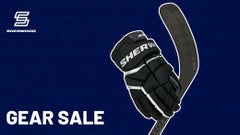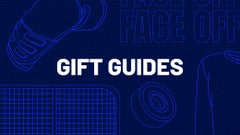How to Select the Correct Skate Sharpening
Powered by Elite Blade Technology
Properly sharpened skate blades are essential for on-ice performance as they provide the grip, glide and confidence needed to play at any level of hockey. This guide will help you understand everything about choosing the right skate sharpening for your skill, size and experience.

What is Hockey Skate Sharpening
For the youth or junior player, we recommend starting with a 1/2" standard sharpening.
For the adult player, we recommend starting with a 5/8" standard sharpening.
Ice Hockey Skate Sharpening Recommendation Chart |
||
| Hollow | Recommendation | Deepest, Max Grip, Less Glide ↑ ↑ ↑ ↑ ↑ ↑ ↓ ↓ ↓ ↓ ↓ ↓ Shallowest, Max Glide, Less Grip. |
| 3/8" | ||
| 7/16" | ||
| 1/2" | Junior or Youth | |
| 9/16" | ||
| 5/8" | New Adult | |
| 11/16" | ||
| 3/4" | Skilled Adult | |
| 7/8" | ||
| 1" | Goalie | |
| 1 1/8" | ||
| 1 1/4" | ||


Hockey Skate Sharpening FAQ
Why is skate sharpening important?
Properly sharpened skates are critically important to every aspect of ice hockey, from grip, speed, and control to agility and more.
What is skate sharpening?
Skate sharpening is the process of creating two sharp edges on each skate blade by cutting a groove, or hollow, between them. This hollow determines how much bite or glide your blades have on the ice.
How does hollow depth affect skating performance?
The deeper the hollow, the more bite for sharper turns, while the shallower the hollow offers more glide for faster skating.
Do new hockey skates need to be sharpened?
Most ice hockey skates do not come pre-sharpened and are not game-ready. Unlike a standard re-sharpening, new hockey skates are first cross-grinded to remove any imbalances or unevenness in the blades before the standard sharpening. At IW Hockey, we include cross-grinding in every sharpening on new skates or blades at no additional cost.
How often should I sharpen my hockey skates?
Plenty of factors affect how frequently an ice hockey skate should be sharpened, but a general rule of thumb is once a month for indoor play. If players are on the ice three times or more a week, sharpening twice a month is recommended for consistent edge performance. Other factors, such as ice hardness in colder climates or skating on outdoor rinks, would also require more frequent sharpenings as these tend to cause more abrasion to the blade.
How do I know when to sharpen my hockey skates?
If you find yourself frequently falling down or sliding out on standard movements, you might be "losing an edge." You can perform the Touch Test by gently touching the fingernail on the blade edges from top to bottom. If the skate blades do not feel sharp or if you can feel any nicks or gouges in them, it is time to have them re-sharpened.
How can I keep my hockey skates sharp?
There are a few key tips and accessories players can use to help keep their skates sharp. The most important is to protect the blades when they are not on the ice, meaning players should use specific walkable skate guards when walking on hard surfaces like concrete and when they put their skates back in the bag. Once the skates go back into the bag, it is important to make sure the blades have been dried with a skate towel and are properly protected with a skate guard.
What accessories help keep my skates sharp?
The most popular skate blade sharpening tool is The Re-Edger, which quickly fixes small nicks in case of an emergency. This tool does not replace professional sharpening, which is why we recommend keeping a pair of sharpened backup blades in your bag at all times too.
Can I adjust my sharpening hollow based on ice conditions?
Yes, rink temperature and overall ice surface conditions react differently to different types of hollows. Blades tend to grip less in harder ice, requiring a player to use a deeper hollow for the same amount of bite. Blades tend to grip more in softer ice, requiring a player to use a shallower hollow for the same amount of bite.
How can I tell if I need to replace my blades?
There are a few signs to look out for on the ice. If you notice you are bottoming out or hitting your boot on the ice during aggressive turns, it is likely time for a new pair. You might also feel like your skating strides are not nearly as responsive as before. Higher-end steel maintains its edges better than lower-end steel, requiring less sharpening and thus extending its lifespan. Consistently rotating multiple sets of replacement blades is another great way to extend sharpening life.
What kind of skate sharpening machines do you use?
We proudly use the Elite E-S4 Automated Sharpener that delivers an industry-leading radius of hollow, a perfectly centered groove, and uniform steel removal throughout the process. This means perfect edges, better performance, longer blade life, and longer performance profile life too.
What's the difference between manual and automated skate sharpeners?
Manual skate sharpening often results in inconsistent results in all aspects of sharpening, while automated skate sharpeners, especially the Elite E-S4, deliver precise, consistent sharpening every time.
What is skate profiling?
Skate profiling is the process of shaping the skate blade to optimize agility, acceleration, power and stability. Stock blades typically come with a single, flat blade shape while performance profiling will utilize multiple shapes depending on what performance attributes need to be addressed the most.
Can I have Ice Warehouse profile my skates?
Yes, IW Hockey offers Elite profiling which includes the Triple.1, Quad.1, Quad.2, Polaris, SCS.1, SCS.2 and more! Learn all about profiling here.
Can I have my ice hockey skates sharpened by mail?
Yes, you can! IW Hockey offers the best and fastest mail-in skate sharpening services in North America, and we even offer mail-in skate custom profiling services too. For $20, you will receive UPS 2-Day Shipping both ways for up to three sets of steel. Mail-in Skate Sharpenings cost $8 and Mail-in Skate Custom Profiling costs $58. To get started, call us at 800.366.3070 or send an email to info@icewarehouse.com. Please note we only accept the skate blades and not the physical skates.







